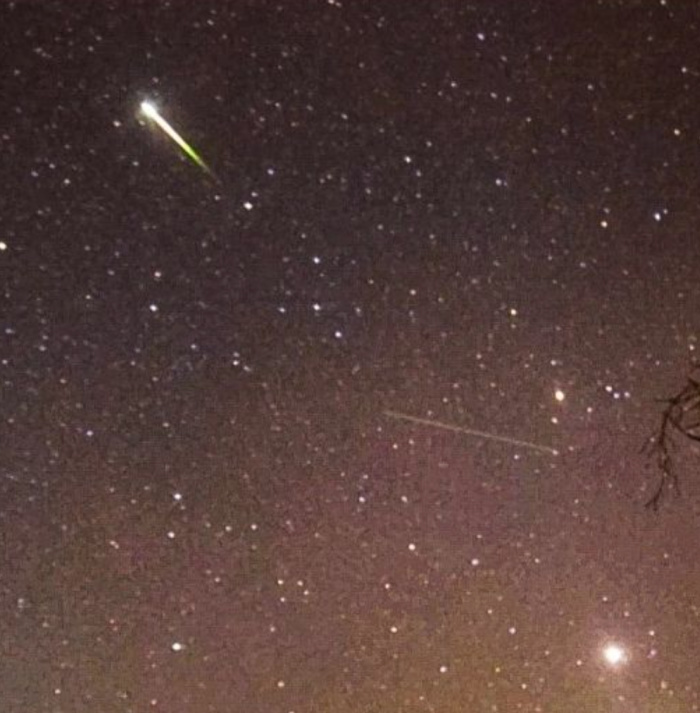Get Those Binoculars Ready, Because The Eta Aquarids Meteor Shower Is About To Peak
Okay, all you astronomy nerds — I’m talking to myself, here.
It’s time to break out those binoculars and telescopes, because the spectacular Eta Aquarids meteor shower is about to peak, and you don’t want to miss it.
The Eta Aquarids meteor shower takes place every year in May, when Earth travels through the debris left behind by Halley’s Comet.
Side Note: Are y’all young enough to remember when Halley’s Comet zoomed across the sky in 1986? I remember my dad waking us up, and traveling to a dark area of the city at like 3am to see the comet. Pretty cool!
Now, you can’t actually see Halley’s Comet until 2061, but you can most definitely see its remnants in the form of the Eta Aquarids meteor shower this May.
This year is quite exciting, because experts are predicting “outbursts” that could actually double the number of meteors we see in the night sky.
When you go outside during the Eta Aquarids this year, you’ll see particles from Comet Halley that started their journey in the time of King David.
Bill Cooke, lead for NASA’s Meteoroid Environment Office
The Eta Aquarids meteor shower is actually going on right now — you might have noticed a stray “shooting star” or two at night.
It is active this year between April 15 to May 27, but it is expected to make a full appearance at about 2am to 4am on May 5.
The Eta Aquarids is one of the few meteor showers that can be seen in the Southern Hemisphere.
But, according to Insider, “this year, experts say that even in the Northern Hemisphere, there may be twice as many meteors visible as in previous years.”
Pretty cool, huh?!?
This year, Jupiter has piled this 3,000-year-old stuff in front of us and we’re gonna run into it.
Bill Cooke, lead for NASA’s Meteoroid Environment Office
Now, there really is no danger of the meteors smashing into Earth, they simply pass by and give us an awesome show at the same time.
What do you think? Will you be waking up to see this hecka cool light display in the night sky?
p.s. If you need some really cool binoculars with which to see the Eta Aquarids meteor shower, check THESE out. You can even shoot the image to your phone for great pictures!














